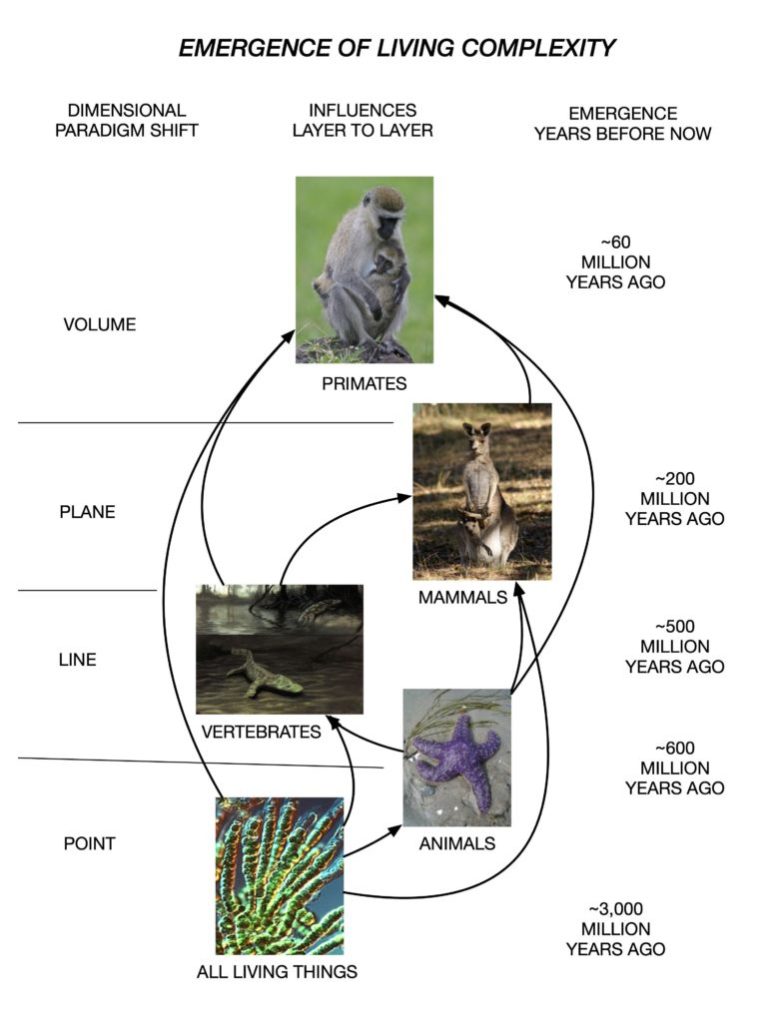Our sense of self rests upon a multilayered morphology that evolved from a single-celled organism into a potentially multi-planetary species. Each more complex evolutionary layer rests upon and is supported by an underlying more ancient morphology that experienced success within its surroundings1. Each of these layers has unique characteristics that facilitate the organism’s persistence. Integration of the function of these layers foundationally supports the evolution of even more complex morphologies.
Animals in their native surroundings integrate these layers fluidly and naturally. Our species elected to evolve the capacity to inhibit these “Reflex Arcs” to enable tool use2. Consequently, we often do not fully enable these locomotor potentials as we develop through childhood. As our built surroundings become more complex and detached from the setting we evolved to successfully persist within, expressing and integrating these ancestral neuromotor potentials becomes more challenging.
The level of maturation of the underlying layers controls the functional potential of an evolutionary layer. The sum of the functional potential of our non-conscious neurology influences our conscious cognitive potential. If we can tease out where within this progression maturation did not fully express, specific exercises and activities facilitating maturation can be engaged with to further support maturation. Because these underlying layers influence conscious cognition, they influence our behavior, emotional regulation, social and intellectual abilities, how we move, and our physical skills.
There are many ways to assess Incomplete maturation of reflex arcs. A common one is the ADHD SURVEY for evaluating prescribing medication (if you score higher than 60% on this survey you are diagnosable as attention deficit). The idea that underpins the project in the link below is a survey that can identify optimal exercises and activities further encouraging neuromotor maturation:
As a layer further matures, it enables further maturation of the neuromotor functions that extend from and rely upon this layer. Strange as it may sound, for example, crawling exercises have been correlated with improved emotional regulation and reading/writing abilities3.
This project is a prototype. Further development of this format is paused. It is envisioned that the structure/function correlations that “backbone” this assessment can be integrated into an AI educational framework for dynamically informed lesson plans, feeding back and further refining the reflex/action relationships, and richly enhancing and extending the tutoring scope.
- There are posts discussing how more complex morphologies evolve here:
EXAPTATION
DIMENSIONAL MASTERY MODEL - There are posts discussing the emergence of tool use from the forelegs here:
THE STRUCTURAL INTERFACE BETWEEN THE HOMUNCULUS AND THE LOCOMOTIVE CORE
THE INNER CONFLICT: HOMUNCULS VS. THE ANIMAL WITHIN WHICH IT RESIDES - There are a multitude of studies supporting this statement. This link points to some of the research:
CRAWLING EXERCISES AND EMOTIONAL REGULATION

